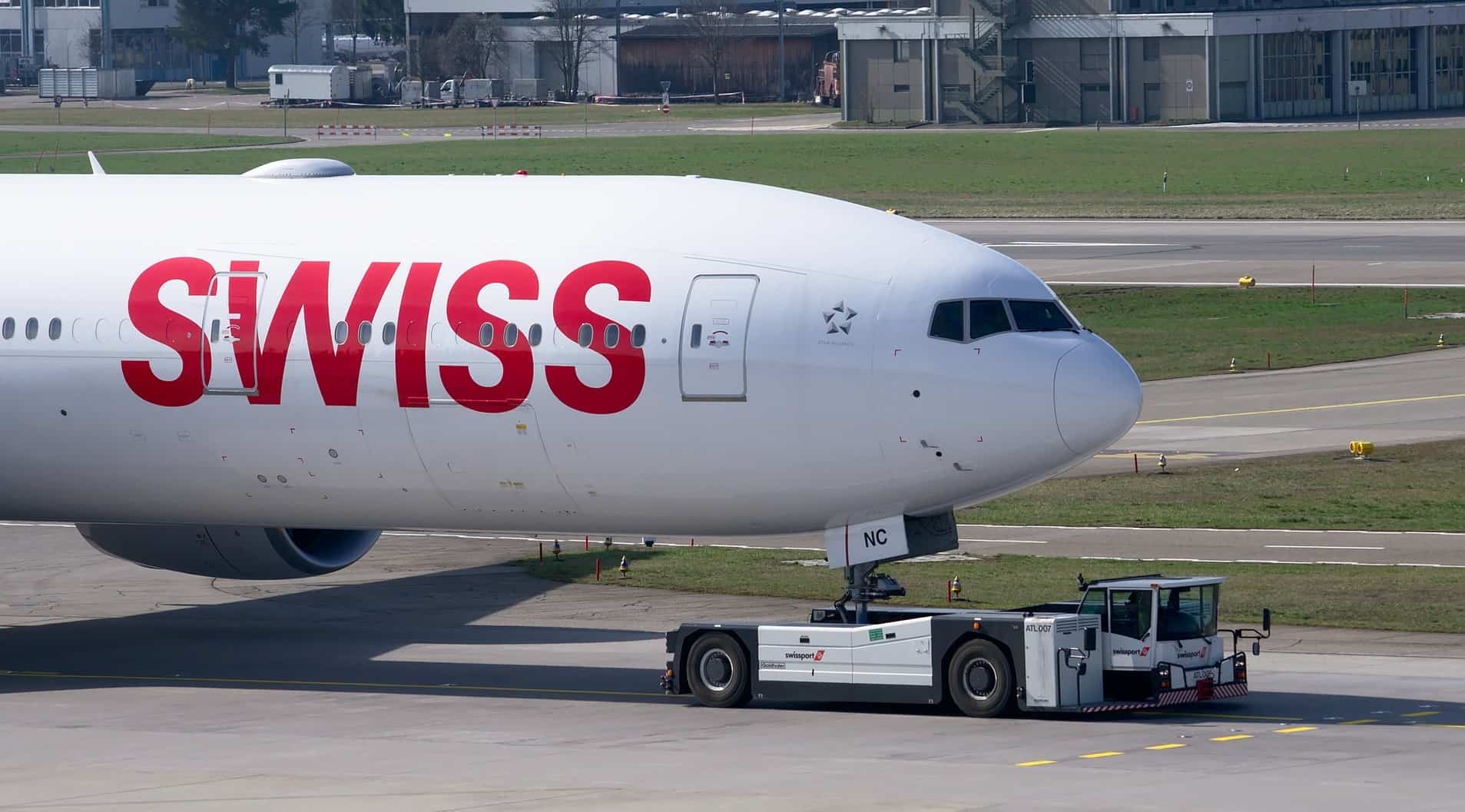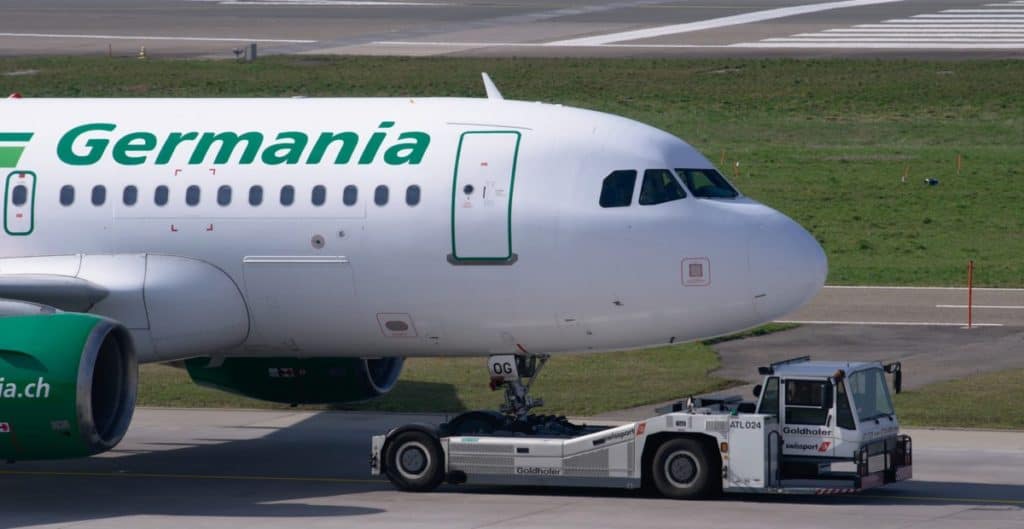
We have all sat on a plane and had the plane pushed back from the gate before the pilots start the engines. There must be a reason for this as some airports always push planes back, but yet others just seem to let the aircraft turn away from the gate. I’ve also seen airplanes being towed around an airport so why not just move them using their own engines?
Airplanes get towed or pushed by tractors and tugs when jet blast from their engines or prop wash from their propellers will create a hazard to nearby buildings, ground crew, other aircraft & ground handling equipment. Moving aircraft from hangers to aprons does not require pilots if being towed.
Depending on the airport, some aircraft movements have to be made with assistance to ensure the safety of all those working in the area or when the need to start the engines is overkill for the maintenance task required.
To find out more about exactly when airplanes need to be pushed and towed read on…
Why Do Airplanes Get Towed?
Airplanes get towed when the thrust of their engines creates a significant hazard to the immediate area surrounding them. Planes also get towed for maintenance purposes so pilots are not required to move the aircraft as airplane mechanics are trained in the use of the aircraft brakes while towing.
When aircraft go in for maintenance or are not required for flight by far the easiest way is to send a tow vehicle to the gate and have the maintenance team tow the aircraft to the hanger or parking areas. By doing this it allows time freedom for the airline, the airport ground controllers, and the maintenance team as pilots are not required to start the engines.
When an aircraft is being towed, trained and authorized maintenance personnel will be on board the aircraft to release and control the brakes to aid the tow vehicle operator.
Some airplanes will need to have their APU (Auxillary Power Unit) started by the maintenance personnel so that electrical and hydraulic systems can be operational to operate the braking systems and aircraft lights when towing at night.
Some tow vehicles may have the ability to hook up to the aircraft to negate the need to start the APU, making the towing process simpler and saving fuel that the APU would burn.
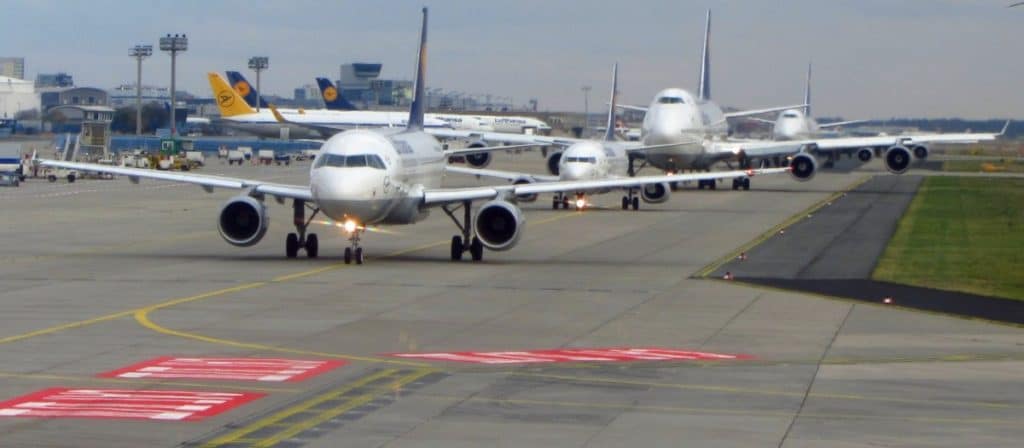
Another reason you might see or experience being towed is when your aircraft has to be towed from the taxiway to the gate. This will be due to the tight confines of the terminal gates and the restricted view the pilots have may require a tow to conduct the arrival safely. As airplanes become larger and airports get busier you may see this quite often.
Even though pilots follow taxi centerlines, airplanes with very large wingspans could create tight spots and any contact made between two aircraft can cause significant damage, lost time, and potentially huge costs, so a simple tow helps prevent this.
Why Do Airplanes Get Pushed By From The Gate?
Airplanes are pushed back from the gate to prevent reverse thrust from the engines being used. Reverse thrust requires high engine power creating a high-speed jet blast. Any debris can damage airport terminals, jetways & ground vehicles. Pilots also cannot see behind making reversing very hazardous.
Large airplanes required a lot of force to get moving from a dead stop. There are two ways to get a plane moving:
- Use the engines to provide reverse thrust
- Use a tow vehicle to push the airplane back
Using the engines to create reverse thrust is accomplished by using deflector scoops on each engine to channel the thrust airflow sideward and slightly forwards. This is mainly used to aid in slowing the aircraft down during landing but can allow the aircraft to reverse, but it has implications.
Older aircraft that had their engines mounted high up on the rear of the aircraft could use reverse thrust to back out from the gate but with most modern airplanes the engines are mounted under the wing placing them close to the ground.
When an airplane uses reverse thrust it takes a high power setting to get the aircraft moving initially. This creates a high-speed wind that can easily damage the airport terminal, jetway, surrounding ground vehicles, baggage, and ground personnel and cause debris to be ingested by the engine – not good!
For propellor-based aircraft like the Bombardier Dash 8 they can reverse the pitch of the propellor blades forcing the thrust forwards and propelling the airplane backward. Again this creates high-speed debris and airflow that can cause problems on a busy airport apron.
By far the most common option is to use a tow vehicle to hook up to that airplane and propel it back without the airplane’s engines running.
By doing this it allows for:
- Far greater safety because the tow truck operator has a much better view of the entire area surrounding and under the aircraft
- The vehicle driver is in communication with the pilots to ensure aircraft braking can be applied if needed in an emergency
- With the aid of ground personnel who walk under the wingtips, the tow truck driver can precisely position the aircraft and ensure it does not contact any structure, vehicle, person, or aircraft
- It allows the airports ground controllers to get aircraft moved with much greater time constraints thus improving the flow around the apron and gate areas

Join My Newsletter & Get Great Tips, Information and Experiences To Help You Become a Superb Pilot!
What Vehicles Tow Airplanes?
Depending on the size of the aircraft to be towed the tow vehicle can be as small as a quad and as large as a bus. The heavier the aircraft is to be moved, the heavier and more power the tow vehicle has to have. Dedicated tractors or tugs are used to hook onto the airplanes to allow for controlled tows.
A fully loaded Airbus A380 can weigh in excess of 575,000 kg or 575 tonnes! To get that mass moving in reverse requires a serious powerhouse of a vehicle!
Commonly referred to as Tractors or Tugs, these workhorses can be seen working at every major airport around the globe.
Here are the Most Common Types of Aircraft Tow Vehicles:
Farm Tractor
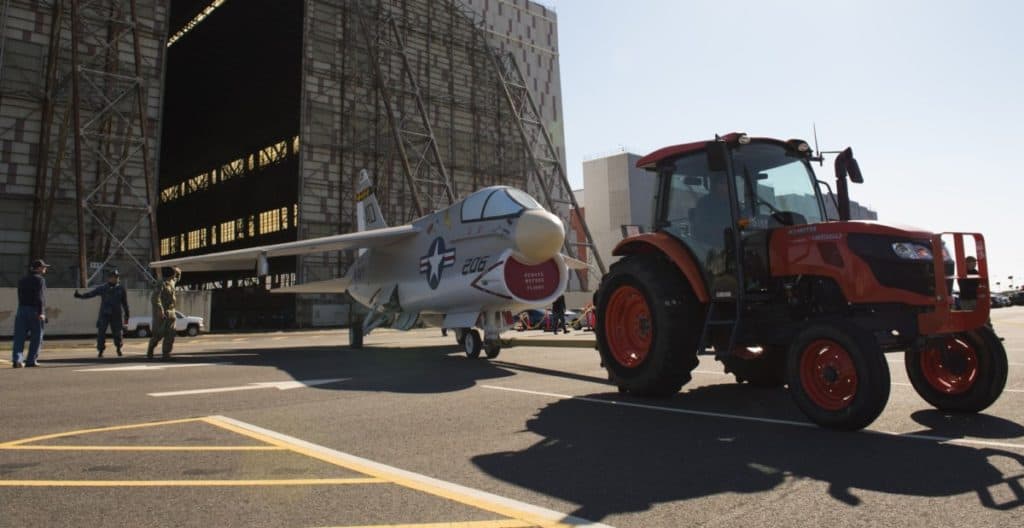
When towing smaller aircraft at private residences, small airports, or aviation companies the use of a farm tractor and a towbar is a common sight. The low-speed, high-torque characteristics of a farm tractor make them perfect for maneuvering smaller aircraft out of hangers and onto aprons.
Their versatility around the property also allows them to be used for other things when not towing like snow clearing, grass cutting, apron sweeping, and much more.
Their cost is also considerably less than a dedicated aircraft Tug.
Tug & Towbar
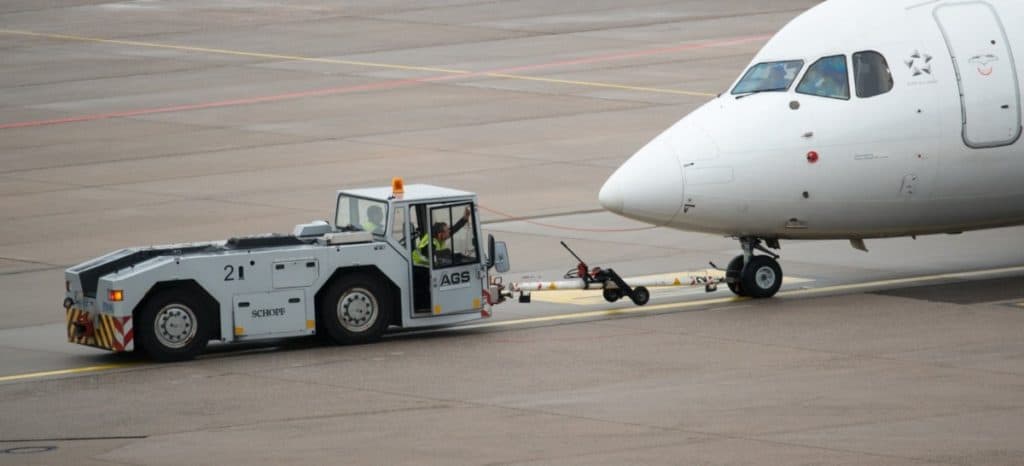
By far the most common sight around the world’s airports is the Tug and Towbar. The towbars are connected to the axle of the aircraft’s front landing gear and then to the front or rear of the Tug. Once connected, the driver of the Tug can easily maneuver the aircraft from the gate and out onto the taxiway.
The raised, glass cabin of the Tug allows the driver a full 360° view to help prevent any collisions or near misses while operating the Tug.
In the photo above you can see the orange wire connecting the communications system between the Tug and the airplane to allow the driver and pilots to talk to one another during the tow.
Towbars are mainly universal and one towbar can be used for many different aircraft, although the correctly sized towbar has to be available and used for each aircraft being towed. A towbar for a Boeing 737 would not be strong enough to move the 575 tonne mass of an Airbus A380!
For this reason, most of the airport terminals are arranged for certain-sized aircraft to commonly use the gates. This allows for the appropriate size ground support vehicles and accessories to be close to hand to allow for quick and efficient turnarounds of each airplane.
Towbarless Tug

Becoming more popular around large airports is the Towbarless Tug. These tractors are purposely designed to be able to move any aircraft without the need for any additional apparatus like a towbar.
These Tugs come in a range of sizes to suit all of the larger aircraft flying today and they are heavy, powerful, moving machines, and due to their speed at moving aircraft, they are a popular choice among ground crews and airport ground controllers.
They work by having the driver reverse up to the nose landing gear of the airplane. The airplane’s front tires are then placed against a stop and a bar or locking arm closes in around the other side of the plane’s tires. Once secured, the Tug will lift the entire landing gear tires off the ground.
This then allows the Towbarless Tug to easily move the airplane around once the pilot/s has released the brakes.
See the video below to see exactly how they work:
To Finish
Moving an airplane away from the gate with a Tug or Tractor is by far the safest way around today’s busy airports. Jetblast and prop wash from an aircraft can easily send loose items airborne, turn grains of dust into projectiles, and create debris that can be easily ingested into multi-million dollar engines.
Allowing the driver and apron walkers to reverse every aircraft out of their parking spots it allows many pairs of eyes to constantly scan the area for potential collisions and negates the need for engines to be running while in the close confines of a busy apron.
Tugs and tractors make maneuvering an aircraft a simple and safe operation and that is why it is very, very rare you will ever see a large aircraft reverse using the power of its own engines.
Further Reading
If you found this article helpful may I suggest a few more for you to read:

